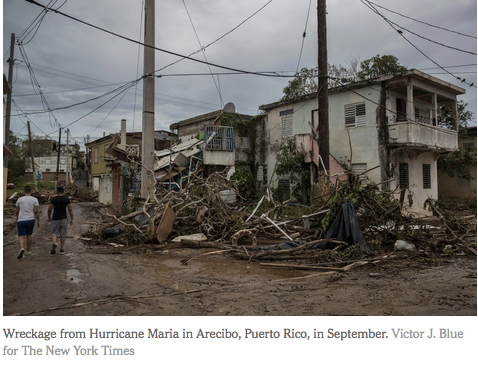Facing mounting evidence that Puerto Rico has vastly undercounted the number of people who died because of Hurricane Maria, Gov. Ricardo A. Rosselló ordered on Monday that every death on the island since the calamitous storm be reviewed.
Officials will look again at all deaths attributed to natural causes after the hurricane, which made landfall Sept. 20 and knocked out power to 3.4 million Puerto Ricans — and to their hospitals and clinics. Parts of the island are still without power almost three months later, and the power grid is operating at only 70 percent of capacity.
The prolonged blackout hampered critical medical treatment for some of the island’s most vulnerable patients, including many who were bedridden or dependent on dialysis or respirators. But if they died as a result, the storm’s role in their deaths may have gone officially unrecorded.
“This is about more than numbers, these are lives: real people, leaving behind loved ones and families,” Mr. Rosselló said in a statement.
The governor acknowledged on Monday that the death toll “may be higher than the official count certified to date” — an apparent about-face for his administration, which has spent months stubbornly defending its counting method, even as it became obvious that it did not reflect the unusually high death rate in Puerto Rico after the storm.
Several news organizations, including The New York Times, conducted independent analyses and found that the number of deaths traceable to the storm was probably far higher than the official count of 64.




